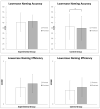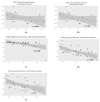Well Played! Promoting Phonemic Awareness Training Using EdTech-GraphoGame Brazil-During the COVID-19 Pandemic
- PMID: 36358421
- PMCID: PMC9688417
- DOI: 10.3390/brainsci12111494
Well Played! Promoting Phonemic Awareness Training Using EdTech-GraphoGame Brazil-During the COVID-19 Pandemic
Abstract
Early literacy skills such as alphabet knowledge and phonemic awareness are made up the foundation for learning to read. These skills are more effectively taught with explicit instruction starting inpreschool and then continuing during early elementary school years. The COVID19 pandemic school closures severely impacted early literacy development worldwide. Brazil had one of the longest school closure periods, which resulted in several children having no access to any educational activities. Education Technology (EdTech) tools can leverage access to pedagogical materials and remediate the consequences of school closure. We investigated the impact of using an early literacy EdTech, GraphoGame Brazil, to foster learning of early literacy skills during the height of COVID19 school closures, in Brazil. We carried out a quasi-experimental, pretest and posttest study with elementary school students who were taking online classes. Participants were pseudo randomly assigned to (1) an experimental group, who played GraphoGame Brazil, and to (2) an active control group, who played an EdTech that focuses on early numeracy skills. The results show a significant positive training effect on word reading accuracy associated with the use of GraphoGame for the children in the experimental group, relative to the control group. We also found statistically significant negative effect in lowercase naming for the control group. We address the consequences of COVID19 school closures, the promise of EdTech and its limitations, and discuss the issue of fostering successful early literacy instruction in countries that have struggled with teaching children to read even before the pandemic.
Keywords: EdTech; GraphoGame; early literacy; phonemic awareness; school closure.
Conflict of interest statement
The authors declare no conflict of interest. The funders had no role in the design of the study; in the collection, analyses, or interpretation of data; in the writing of the manuscript, or in the decision to publish the results.
Figures









References
-
- Dehaene S. How We Learn: Why Brains Learn Better Than Any Machine... for Now. Volume 370 Penguin; London, UK: 2021.
-
- Dehaene S. Reading in the Brain: The Science and Evolution of a Human Invention. Viking; New York, NY, USA: 2009.
Grants and funding
LinkOut - more resources
Full Text Sources

